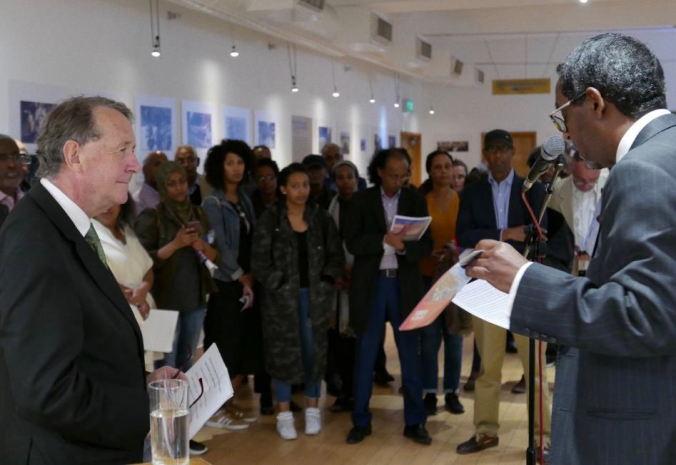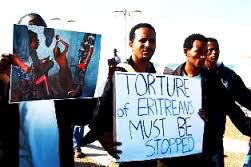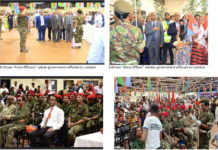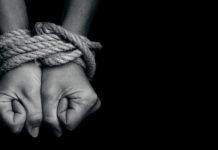Important new exhibition open to see in London during September.It is showing at Resource for London from 5-30 September, and features more than 40 images – a mix of archive material and personal collections, some never publicly exhibited before.
On Tuesday 4 September, Lord Alton of Liverpool opened a photo exhibition on Eritrea on behalf of the All Party Parliamentary Group on Eritrea, of which he is Vice Chairman.

Eritrea in the News tells the story of Eritrea through a series of fascinating images captured at pivotal points in the country’s history, from Italian colonial rule through to the struggle for independence and the repression of dictatorship that followed. The exhibition has been organised by Eritrea Focus – a keen supporter of the APPG’s work.
It is showing at Resource for London from 5-30 September, and features more than 40 images – a mix of archive material and personal collections, some never publicly exhibited before – of the places and people that have shaped Eritrea throughout the years.
Welcome from Habte Hagos, Chairman of Eritrea Focus

Habte Hagos welcomed guests to the exhibition opening and introduced Eritrea Focus is a Think Tank & Research organisation working with multiple non-governmental organisations to advance the democratisation of Eritrea, unite Eritreans from all walks of life, and to bring about positive change in a country that has suffered greatly under dictatorship.
Habte summarised the content of the exhibition, which brings together a series of photographs – some of them never before exhibited – that shed light on Eritrea’s history of subjugation and struggle, where colonial rule was followed by federation with Ethiopia in 1952.
He said that although Eritrea had declared its independence from Ethiopia in 1991, “the promise of freedom was never honoured”, and in 27 years no elections have been held, the constitution of 1997 has never been implemented, and there is no independent legislature, judiciary, civil society or media. Indefinite national service, he said, “has been characterized by a UN Commission of Inquiry as effective enslavement”.
Commenting on current political developments between Eritrea and Ethiopia, he said that there remained few signs of real change.
Habte then welcomed Lord Alton to deliver the keynote address, praising him as a good friend of Eritrea Focus and a dedicated campaigner for human rights and an advocate for international religious freedoms.
Keynote address from Lord Alton of Liverpool, Vice-Chair of the APPG on Eritrea

Lord Alton thanked Habte and praised the work of Eritrea Focus and its members for campaigning tirelessly to draw international attention to the ongoing human rights abuses in Eritrea. He also thanked Martin Plaut for his involvement and efforts in raising awareness through his book Understanding Eritrea.
In particular, Lord Alton drew upon his recent experiences at a meeting of the APPG on Religious Freedom, at which he heard first-hand testimony from religious leaders in Eritrea of the persecution,detention and torture that they have faced, and praised the inter-faith solidarity that they had demonstrated.


Lord Alton told attendees that the exhibition offer an in-depth insight into the grievous abuses of human rights committed by the government of Eritrea, which he said is engaged in violating almost all 30 human rights enshrined in the Universal Declaration of Human Rights.
Making reference to the images displayed in the exhibition, Lord Alton remarked that the photograph of coffins on the Italian island of Lampedusa, containing the bodies of Eritreans who drowned when a boat carrying 336 people sank in the Mediterranean in 2013, affected him deeply and was a desperate reminder of the forces that drive Eritreans to flee their country.
Lord Alton introduced the exhibition by noting that while it is called ‘Eritrea in the News’, the small nation in eastern Africa rarely makes the news, and little is known amongst the wider international community about the repression and abuses suffered by its citizens.
He reiterated the history of Eritrea since the years of Italian colonial rule, which were followed by a disinterested British administration that passed the matter of the country’s future to the United Nations. He noted that the ‘federation’ of Eritrea with Ethiopia was more of an incorporation of the former into the latter, and that “history would have been very different” if Emperor Haile Selassie had “accepted Eritrea’s federal status and respected its individuality”.
Lord Alton pointed to another “iconic” photo – that of Eritreans celebrating in the streets on 24 May 1991 – as being akin to images from the fall of the Berlin Wall, in the jubilation and expectation that it embodied. It was, he said, a poignant reminder of the hope that was shattered by the regime of President Isaias Afwerki, and the policy of “no war, no peace” that dominated Eritrean politics and policy for 20 years. “Many of you will know this from painful, personal experience”, he said.
Of recent political developments, Lord Alton expressed his hope that the rapprochement between Eritrea and Ethiopia is permanent, and that it “brings peace and reconciliation between these two neighbours” and is accompanied by “the real, democratic, internal transformation that Eritrea’s people so richly deserve”. “An international community looking to a new future with an open, just and free Eritrea,” he said, “must not do so at the expense of forgetting its past.”
In closing, Lord Alton encouraged his audience at the Resource of London to spread the word about the exhibition, contact London media and make representations to their local politicians to bring attention to Eritrea in Parliament and in the public eye.
Closing remarks from Habte Hagos
Habte Hagos thanked guests for attending the opening, and thanked Andy Gregg, CEO of Race on the Agenda (ROTA) and a campaigner with Eritrea Focus, for his help with the exhibition and unwavering support for the Eritrean people. He also thanked exhibition curator Chris Hudson for his excellent work.
He informed guests of two upcoming Eritrea Focus events at the Resource for London, on 15 and 22 September, about the Ethiopia-Eritrea peace deal, and the ‘push factors’ that drive Eritreans to flee their homes.
Habte ended with a personal wish that such exhibitions might one day be held in Asmara and other towns and cities across Eritrea, without intimidation.
=====================
These were David Alton’s full remarks at the launch event:
Eritrea in the news: Photo Exhibition Launch, September 4, at 17:00 hours RfL
Ladies and gentlemen, friends,
Thank you for joining us this evening to open what is a timely and, I hope you’ll agree, fascinating exhibition at the Resource for London.
I would like in particular to thank Eritrea Focus, which has organised this exhibition.
For many years now, Eritrea Focus has campaigned tirelessly to raise the profile of Eritrea on the international stage.
The exhibition is called ‘Eritrea in the News’ – but we are keenly aware of the fact that this small state in Eastern Africa very rarely makes the news.
I would vouch that precious little is known about it by those who are not closely involved in advocating for Eritreans’ basic rights and freedoms.
As Vice-Chair of the All-Party Parliamentary Group on Eritrea, I have heard all too often of the widespread and systematic abuses of human rights and civic freedoms that have taken place in the country under the rule of President Isaias Afwerki.
I have heard first-hand testimony from religious leaders of believers being jailed, tortured, and abused in the most heinous ways.
These images and text are designed to take the visitor from the earliest days of Eritrea’s colonial experience, through the Italian period and then into the Second World War, which ended with Britain ruling the country. Britain – unwilling to rule Eritrea – attempted to find an appropriate fate for the territory it had taken from the Italians. Eventually this task was taken by the United Nations, which sent a team to consult Eritreans on what future they wished to have. Sadly, there was no consensus. The UN decided to hand it to Ethiopia, but as part of a federation, with Eritrea retaining important rights. You will see images of this and of the Emperor Haile Selassie incorporating it into his Empire. If he had accepted Eritrea’s federal status and respected its individuality, perhaps history would be very different.
Tragically, it was not. In the 1960’s resistance turned to armed struggle, which continued for thirty long years. The blood spilled to achieve independence was immense. The celebration of liberation in 1991 is captured in an image which – for once – can rightly be described as iconic. The rest you all probably know: how the precious independence did not lead to a free and democratic state; how a minor border skirmish led to a terrible war with Ethiopia and how twenty years of no-war, no-peace squandered the lives of so many Eritreans. The flight into foreign lands; the drownings in the Mediterranean; the sadness of exile – all this followed. Many of you will know this from painful, personal experience. They are captured in the photographs around you – many of which have never been shown before.
The recent, rapid rapprochement between Eritrea and its neighbour Ethiopia, following years of war and tension, and been spearheaded by Prime Minister Abiy Ahmed Ali. It has been hailed – perhaps prematurely – as a landmark breakthrough that could win its architects a Nobel Peace Prize. Let us hope that it is permanent, that it brings peace and reconciliation between these two neighbours and that it is accompanied by the real, democratic, internal transformation that Eritrea’s people so richly deserve.
While we remain hopeful for the future, it is at such moments that the exposition of Eritrea’s past and present become all the more important.
The photos here are a reminder of the human stories interwoven in political upheaval and armed conflict. They are a reminder of the desperate conditions that continue to drive many Eritreans to risk their lives fleeing repression, persecution, and enslavement.
A peace that is just and meaningful will not overlook this suffering, and an international community looking to a new future with an open, just and free Eritrea must not do so at the expense of forgetting its past.
Thank you






